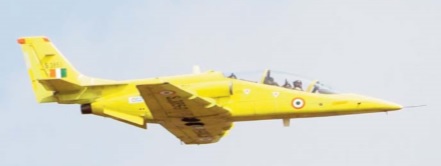- Home
- Defence
IJT-36 SITARA - HAL IS A BOTTLENECK FOR TRAINING THE INDIAN AIR FORCE
YB WEB DESK. Dated: 9/24/2022 2:24:07 PM

New Delhi,Sep 23 Hindustan Aeronautics Limited (HAL), the premier Indian state aeronautical manufacturer, enjoys much fanfare today, especially for its Light Combat Aircraft (LCA) Tejas and export prospects. However, HAL suffers from severe, systemic issues that continue to ail the organisation and the Indian Air Force (IAF). The IAF Pilot Training Stages An Indian Air Force fighter pilot must adapt and take rigorous training. Not only must they come to terms with such ungodly forces while flying a combat aircraft, but they must also use a plethora of gadgetry like radars, onboard computers, etc., to save their lives and the nation. The training for a fighter pilot is structured into three stages. The first stage consists of learning to fly on a trainer aircraft and theoretical instruction of aerial combat principles. Fighter pilots then advance to the second stage, where they advance their academic learning and commence fighter jet flight training. After graduating from Stage II, the fighter pilots are commissioned and undergo Stage III training. Finally, they join their assigned squadrons. The critical part of the training is the flying hours that a pilot gets during training. The flying hours are a key to readiness and an overall barometer of other factors like the pilot and spare parts availability, speed of throughput at the depot and operational budgets. This boils down to sorties conducted a week. It takes three sorties a week for a pilot to be able to sustain their baseline. However, flying four sorties a week significantly improves their ability. Four sorties a week also compound to nearly 200 hours of flight. The IAF uses HAL’s indigenous HJT-16 Kiran trainer aircraft for training the pilots in the intermediate stage or Stage II. Kiran was introduced as a trainer for the IAF in 1968. Even after five decades, HAL has not been able to replace Kiran. Star Struck Down: HAL HJT-36 Sitara HAL has been working on replacing the intermediate trainer aircraft: the HAL HJT-36 Sitara. The Sitara trainer has been under development since 1997, and the program has been plagued with technical problems, among which most recently was the issue of carrying out a six-turn spin flight. This problem took six years to be resolved. This has been a fundamental step towards the commissioning of the trainer since the training requires the pilots to enter and recover from stall or spin. Only if Sitara can perform recovery safely and consistently can it be considered by the IAF. The IAF has naturally evolved its ask in the 25 years of development of the HJT 36 Sitara. HAL must also offer a complete